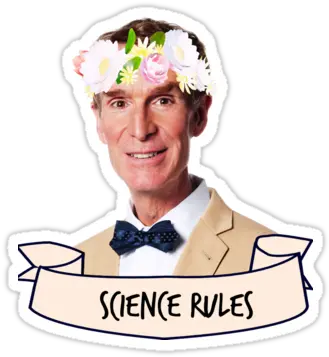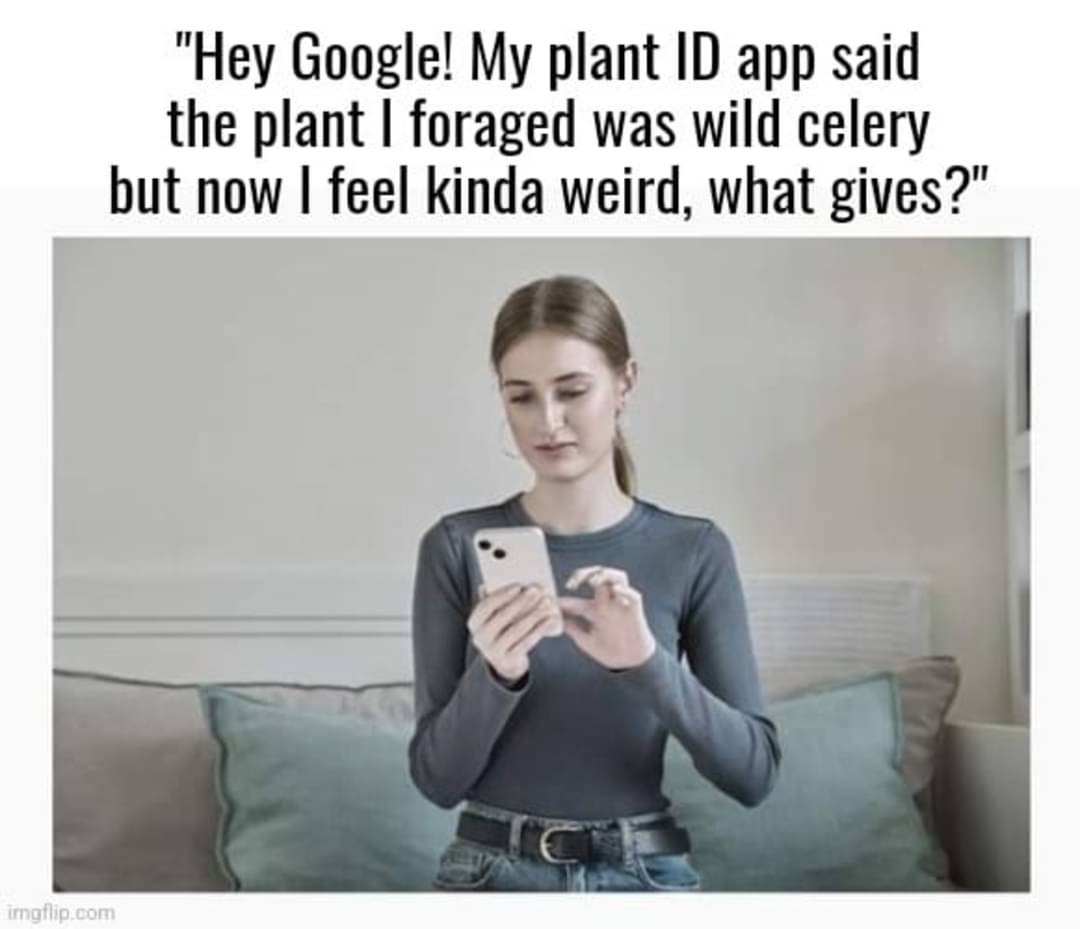I know nothing about plants.
Science Memes
Welcome to c/science_memes @ Mander.xyz!
A place for majestic STEMLORD peacocking, as well as memes about the realities of working in a lab.

Rules
- Don't throw mud. Behave like an intellectual and remember the human.
- Keep it rooted (on topic).
- No spam.
- Infographics welcome, get schooled.
Research Committee
Other Mander Communities
Science and Research
Biology and Life Sciences
- !abiogenesis@mander.xyz
- !animal-behavior@mander.xyz
- !anthropology@mander.xyz
- !arachnology@mander.xyz
- !balconygardening@slrpnk.net
- !biodiversity@mander.xyz
- !biology@mander.xyz
- !biophysics@mander.xyz
- !botany@mander.xyz
- !ecology@mander.xyz
- !entomology@mander.xyz
- !fermentation@mander.xyz
- !herpetology@mander.xyz
- !houseplants@mander.xyz
- !medicine@mander.xyz
- !microscopy@mander.xyz
- !mycology@mander.xyz
- !nudibranchs@mander.xyz
- !nutrition@mander.xyz
- !palaeoecology@mander.xyz
- !palaeontology@mander.xyz
- !photosynthesis@mander.xyz
- !plantid@mander.xyz
- !plants@mander.xyz
- !reptiles and amphibians@mander.xyz
Physical Sciences
- !astronomy@mander.xyz
- !chemistry@mander.xyz
- !earthscience@mander.xyz
- !geography@mander.xyz
- !geospatial@mander.xyz
- !nuclear@mander.xyz
- !physics@mander.xyz
- !quantum-computing@mander.xyz
- !spectroscopy@mander.xyz
Humanities and Social Sciences
Practical and Applied Sciences
- !exercise-and sports-science@mander.xyz
- !gardening@mander.xyz
- !self sufficiency@mander.xyz
- !soilscience@slrpnk.net
- !terrariums@mander.xyz
- !timelapse@mander.xyz
Memes
Miscellaneous
Yeah, I am not botanical enough to get this, but presumably it's something poisonous?
Apiaceae, the carrot family, is full of wild species that are incredibly poisonous. Basically if it looks like a carrot in the wild dont eat it or you might die.
Same goes for if it looks like a Tomato, those are nightshades and the only ones I know about that aren't deadly to eat are tomatoes and peppers, and the peppers only because the poison they developed doesn't kill you it just makes you feel like your entire digestive tract is on fire.
Eggplants, potatoes, ground cherries, tomatillos, huckleberries are all edible too. That said you are right, if it is growing in the wild assume it will kill you. Don't eat it.
Potatoes, believe it or not, are also nightshades.
Actually I'm pretty sure those can poison you if you don't grab them at the right time
Yes, and also it can be poisonous later down the line after harvested
The berries of potatoes are poisonous, just the tubers aren't unless exposed to sunlight.
And tobacco
Ah ok, so like Queen Anne's Lace and Poison Hemlock?
Yeah, water hemlock, cowbane, fool's parsley, wild parsnip, etc, etc.
Yes
Yep. Hemlock is one of them
Look up “Sardonic Grin”. It’s one of those things that makes you think this is interesting, and also never going to eat wild plants again.
Or hallucinogenic? Although if there were an easy-to-forage hallucinogen that looked like celery I'm pretty sure I'd know about it.
A trip down the river Styx
The roots of the common reed contain dimethyltryptamine. Not sure if it's enough to make a tea, never heard of anyone doing it.
Hemlock, I believe.
Apparently it is indeed referring to hemlock (Oenanthe crocata):
Contains oenanthotoxin. The leaves may be eaten safely by livestock, but the stems and especially the carbohydrate-rich roots are much more poisonous. Animals familiar with eating the leaves may eat the roots when these are exposed during ditch clearance – one root is sufficient to kill a cow, and human fatalities are also known in these circumstances. Scientists at the University of Eastern Piedmont in Italy claimed to have identified this as the plant responsible for producing the sardonic grin, and it is the most-likely candidate for the "sardonic herb", which was a neurotoxic plant used for the ritual killing of elderly people in Phoenician Sardinia. When these people were unable to support themselves, they were intoxicated with this herb and then dropped from a high rock or beaten to death. Criminals were also executed in this way.
(From Wiki page on poisonous plants)
But the main wiki page on Oenanthe crocata doesn't even mention this.
Hemlock water-dropwort looks like celery. It causes muscle spasms, which at times results in the victim dying with a grin on their face.
Looks pretty similar to hemlock.
Neither do the LLMs you used to identify your “wild celery” lol
it baffles me that there are ID apps that don't follow the model of 1) very clearly SUGGESTING what it MIGHT be, and 2) only present a level of precision it's actually confident in
having it always present a specific species and just pick the most likely one is so dumb and irresponsible of the designers.
It's a fundamental problem with the tech in general. It inherently has no concept of "I don't know" and will just be confident, specific, and wrong.
That's blatantly untrue. My plant ID app gives multiple suggestions with certainty percentages.
What's your plant ID app?
inaturalist does this, and also lets other people suggest an ID so you can get a consensus.
This is blatantly false. Classification tasks like this all have a level of certainty for each possible category - it's just up to the person writing the software to interpret those levels of certainty in a way that's useful to the user. Whether this is saying "I don't know" when the certainties are too spread out, or providing a list of options like other people in this thread have said their apps do. The problem is that "100% certainty" comes off well with the general public, so there's a financial incentive to make the system seem more certain than it is by using a layer (from memory it's called Softmax?) that will return only the category with the highest degree of certainty.
This actually is a symptom from the sort of "beneficial" overfit in Deep Learning. As someone whose research is in low data, long tails, and few shot learning, there's a few things that smaller networks did better in generalization, and one thing they particularly did better (without explicit training for it) is gauging uncertainty. This uncertainty is sometimes referred to as calibration. Calibrating deep networks can yield decent probabilities that can be used to show uncertainty.
There are other tricks for this. My favorite strategies prep the network for learning new things. Large margin training and the like are a good thing to look into. Having space in the output semantic space (the layer immediately before the output or earlier for encoder decoder style networks) allows for larger regions for distinct unknown values to be separated from the known ones, which helps inherently calibrate the network.
uhhh do you have any clue how it actually works? i mean maybe there's some sort of visual AI tech that doesn't let you make it say "idk fam" but the standard stuff just gives a point value to each result, and you could just.. have a minimum limit..
and like i'm pretty certain the current chatbots available generally are capable of responding that they don't know, they're certainly capable of "recognizing" when it's a topic they're not allowed to talk about.
Oh so poisoning the elderly with hemlock was more common than just executing annoying philosophers eh ?
My app only says "dicot" so now that's what I call all plants.

I don't know who is using these things. If you've got a phone and a signal then you've got a shop. Go to it and buy the things you need.
I forage and hunt for food. It lets me get things I can't get at the grocery store and it's free.
I use them. It helps me identify "weeds" so I can know if they're good for pollinators or have to be removed immediately for invasiveness.
Example: I often keep a couple milkweed plants growing for monarch butterflies.
I would say that most people foraging wild plants in western societies aren't doing it to sustain themselves. It is usually has to do with learning more about their surroundings, to revive old knowledge or for fun. And as long as you double check, play close attention to detail and most importantly don't blindly follow an app you should be completely fine with this. (Well, foraging plants from the Apiaceae (the carrot family) is not really a good idea due to the close resemblance of most of its members.)
It's for beginners. My son uses it to learn about plants in our yard.
It might be wrong, but that's the next step of parenting.
